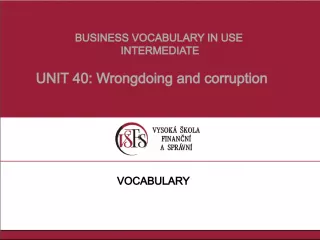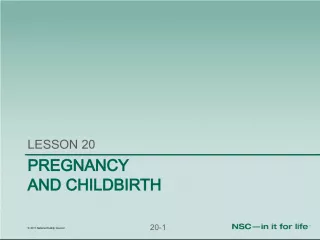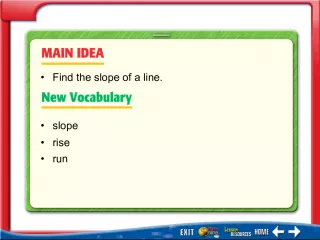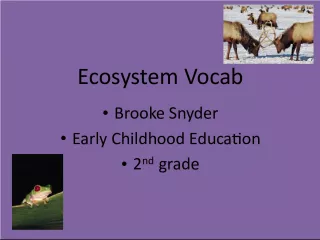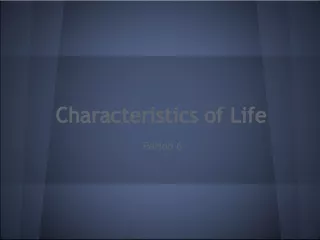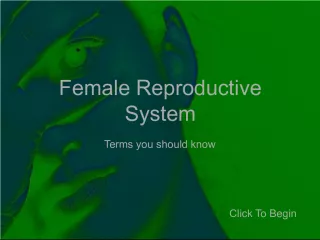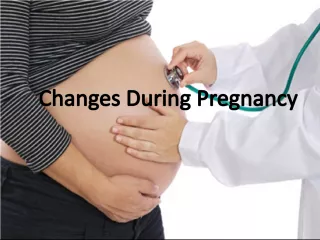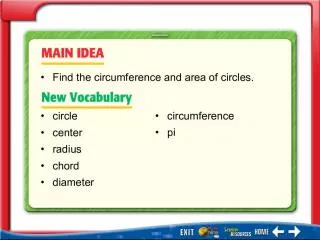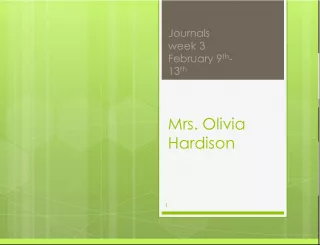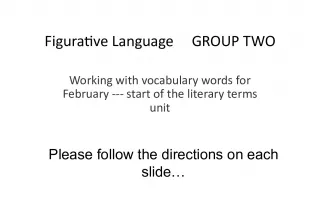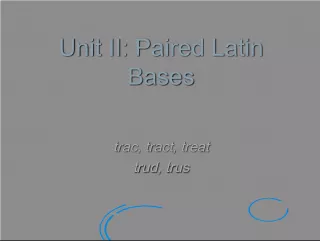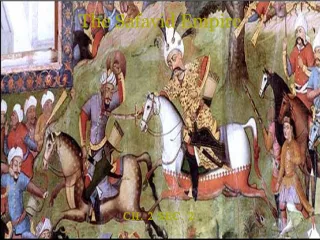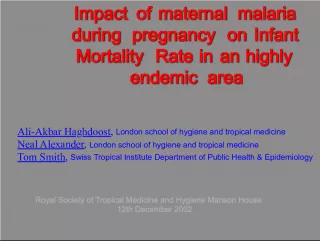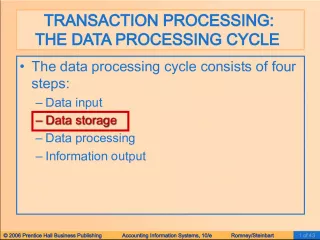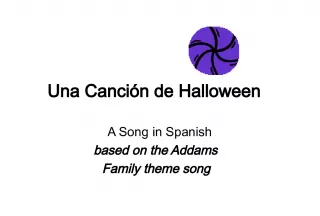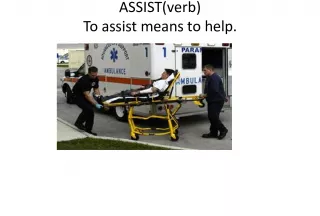Pregnancy Vocabulary: Important Terms to Know


This article provides a brief overview of some of the key terms associated with pregnancy. It includes definitions for the process of conception, the implantation of a fertilized egg, and the prenatal period
- Uploaded on | 6 Views
-
 suzy
suzy
About Pregnancy Vocabulary: Important Terms to Know
PowerPoint presentation about 'Pregnancy Vocabulary: Important Terms to Know'. This presentation describes the topic on This article provides a brief overview of some of the key terms associated with pregnancy. It includes definitions for the process of conception, the implantation of a fertilized egg, and the prenatal period. The key topics included in this slideshow are . Download this presentation absolutely free.
Presentation Transcript
Slide1PregnancyPregnancy Vocabulary Vocabulary
Slide2ConceptionConception (#5) The act of becoming pregnant (fertilized egg implants into the endometrium). (#5) The act of becoming pregnant (fertilized egg implants into the endometrium).
Slide3Prenatal Period Prenatal Period (#22) Occurring before birth (during pregnancy). (#22) Occurring before birth (during pregnancy).
Slide4TrimestersTrimesters (#16) Any of 3 periods during pregnancy, lasting 3 months each. (#16) Any of 3 periods during pregnancy, lasting 3 months each.
Slide5EmbryoEmbryo (#6) The developing human from implantation to the end of the 8th week. (#6) The developing human from implantation to the end of the 8th week.
Slide6EmbryoEmbryo
Slide76 Week Embryo 6 Week Embryo
Slide8FetusFetus (# 7) Developing human from 3 months (beginning of 9 th week) until birth. (# 7) Developing human from 3 months (beginning of 9 th week) until birth.
Slide93 Month Fetus 3 Month Fetus
Slide10FetusFetus
Slide11PlacentaPlacenta (#2) Pancake shaped organ that unites fetus to mother & acts as a filter. (#2) Pancake shaped organ that unites fetus to mother & acts as a filter.
Slide12
Slide13
Slide14
Slide15Umbilical Cord Umbilical Cord (#4) Cord attaching fetus to the placenta, carries oxygen & food to baby & waste to mother. (#4) Cord attaching fetus to the placenta, carries oxygen & food to baby & waste to mother.
Slide16
Slide17
Slide18
Slide19
Slide20Amniotic Sac Amniotic Sac (#3) Thin membrane sac, covering fetus, contains protective fluid. (#3) Thin membrane sac, covering fetus, contains protective fluid.
Slide21
Slide22
Slide23LaborLabor (#8) Physical activities involved in giving birth. (#8) Physical activities involved in giving birth.
Slide24ContractionsContractions (#9) Rhythmic muscular movements of the uterus during labor. (#9) Rhythmic muscular movements of the uterus during labor.
Slide25DilationDilation (#17) Widening of the cervix (the diameter of the cervix gets wider). (#17) Widening of the cervix (the diameter of the cervix gets wider).
Slide26
Slide27EffacementEffacement (#18) The ridge of the cervix thins out, until it seems to no longer be part of the uterus. (#18) The ridge of the cervix thins out, until it seems to no longer be part of the uterus.
Slide28
Slide29
Slide30EngagementEngagement (#19) When the head of the fetus drops low into the pelvis or birth canal. (#19) When the head of the fetus drops low into the pelvis or birth canal.
Slide31
Slide32CrowningCrowning (#20) Point at which head of fetus is visible at the vaginal opening. (#20) Point at which head of fetus is visible at the vaginal opening.
Slide33Birth Canal Birth Canal (#10) Cervix, vagina, and vulva, fetus passes through during birth. (#10) Cervix, vagina, and vulva, fetus passes through during birth.
Slide34AfterbirthAfterbirth (#1) Placenta and fetal membranes that are expelled after delivery. (#1) Placenta and fetal membranes that are expelled after delivery.
Slide35
Slide36PostnatalPostnatal (#23) Relating to an infant immediately after birth (APGAR Test). (#23) Relating to an infant immediately after birth (APGAR Test).
Slide37Activity (muscle tone) 0 Limp; no movement 1 Some flexion of arms and legs 2 Active motion Activity (muscle tone) 0 Limp; no movement 1 Some flexion of arms and legs 2 Active motion Pulse (heart rate) 0 No heart rate 1 Fewer than 100 beats per minute 2 At least 100 beats per minute Pulse (heart rate) 0 No heart rate 1 Fewer than 100 beats per minute 2 At least 100 beats per minute Grimace (reflex response) 0 No response to airways being suctioned 1 Grimace during suctioning 2 Grimace and pull away, cough, or sneeze during suctioning Grimace (reflex response) 0 No response to airways being suctioned 1 Grimace during suctioning 2 Grimace and pull away, cough, or sneeze during suctioning Appearance (color) 0 The baby's whole body is completely bluish-gray or pale 1 Good color in body with bluish hands or feet 2 Good color all over Appearance (color) 0 The baby's whole body is completely bluish-gray or pale 1 Good color in body with bluish hands or feet 2 Good color all over Respiration (breathing) 0 Not breathing 1 Weak cry; may sound like whimpering, slow or irregular breathing 2 Good, strong cry; normal rate and effort of breathing Respiration (breathing) 0 Not breathing 1 Weak cry; may sound like whimpering, slow or irregular breathing 2 Good, strong cry; normal rate and effort of breathing
Slide38PostpartumPostpartum (#24) Six week period after birth for bonding and recovery. (#24) Six week period after birth for bonding and recovery.
Slide39Postpartum Depression Postpartum Depression (#26) Series of mood swings and emotional changes after birth. (#26) Series of mood swings and emotional changes after birth.
Slide40Breech Birth Breech Birth (#15) Fetus that is positioned buttocks or feet first in the birth canal. (#15) Fetus that is positioned buttocks or feet first in the birth canal.
Slide41
Slide42
Slide43Caesarean Section Caesarean Section (#14) Surgical incision to abdomen and uterus for delivery of fetus. (#14) Surgical incision to abdomen and uterus for delivery of fetus.
Slide44
Slide45Nurse Midwife Nurse Midwife (#25) Registered nurse with additional training in child birthing. (#25) Registered nurse with additional training in child birthing.
Slide46Lamaze Method Lamaze Method (#12) Mental & physical preparation by mother, helps suppress pain by breathing. (#12) Mental & physical preparation by mother, helps suppress pain by breathing.
Slide47Natural Childbirth Natural Childbirth (#11) Mother receives preparation to stay conscious with little or no use of drugs. Baby is born vaginally. (#11) Mother receives preparation to stay conscious with little or no use of drugs. Baby is born vaginally.
Slide48Leboyer Method Leboyer Method (#13) Soft lights and use of a birthing tub to deliver baby into water, less traumatic. (#13) Soft lights and use of a birthing tub to deliver baby into water, less traumatic.
Slide49
